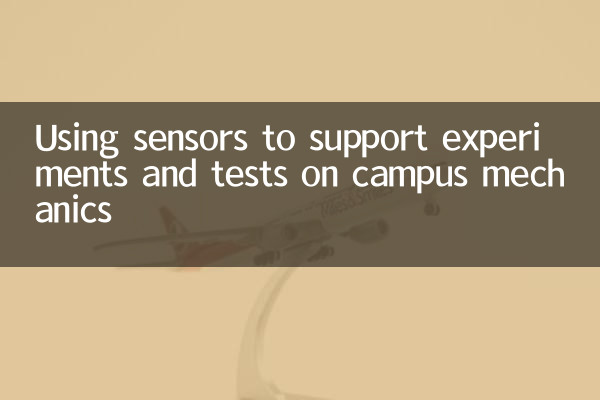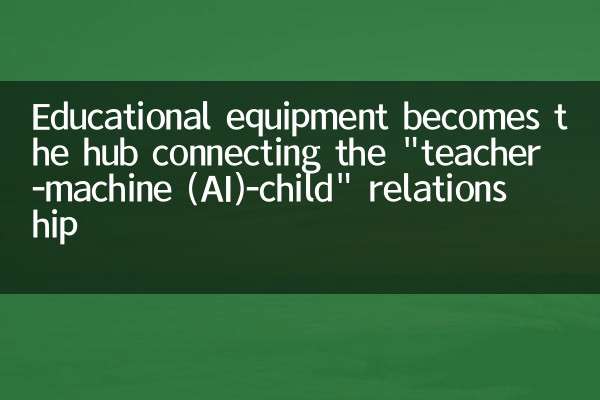Using sensors to support experiments and tests on campus mechanics
With the advancement of technology, sensor technology is becoming more and more widely used in the field of education. In mechanical experiments, sensors can provide high-precision data acquisition and analysis, helping students understand physical phenomena more intuitively. This article will explore how to use sensors to support on-campus mechanics experiments and tests, and combine popular science and technology and education topics in the past 10 days to analyze their practical application value.
1. The importance of sensors in mechanical experiments

Mechanical experiments are an important part of physics teaching. Traditional experimental methods rely on manual measurement and recording, and there are problems of large errors and low efficiency. Modern sensor technology can collect force, displacement, acceleration and other data in real time and analyze it through computer software, greatly improving the accuracy and efficiency of the experiment.
Here are several common sensors and their applications in mechanical experiments:
| Sensor Type | Measurement parameters | Application scenarios |
|---|---|---|
| Force sensor | Tension, pressure | Hook's Law Experiment, Friction Measurement |
| Acceleration sensor | Acceleration | Free fall experiment, inclined motion analysis |
| Displacement sensor | Displacement, deformation | Spring vibrator experiment, material mechanics test |
2. Analysis of popular science and education topics in the past 10 days
In light of recent hot topics, the application of sensor technology in the field of education has attracted much attention. Here are the hot topics related to sensors and education in the last 10 days:
| Hot Topics | Related fields | Discussion hot topic |
|---|---|---|
| AI-powered smart lab | Educational Technology | high |
| Application of the Internet of Things (IoT) on campus | Internet of Things | Medium-high |
| Combining virtual reality (VR) with experimental teaching | Virtual reality | middle |
These topics reflect the trend of the development of educational technology, and sensors, as the core device for data acquisition, play an important role in smart laboratories and IoT applications.
3. Sensor experimental case: Spring vibrator test
Taking the spring vibrator experiment as an example, traditional methods require manual measurement of amplitude and time, while using displacement sensors and force sensors, data can be automatically recorded and dynamic curves can be generated. Here is a comparison of experimental data:
| Measurement method | Error range | efficiency |
|---|---|---|
| Traditional manual measurement | ±5% | Low |
| Automatic sensor acquisition | ±1% | high |
Through comparison, it can be seen that the introduction of sensor technology has significantly improved the accuracy and efficiency of the experiment.
4. Future prospects
With the development of technologies such as 5G and artificial intelligence, the application of sensors in mechanics experiments will be more intelligent. For example, combined with machine learning algorithms, experimental trends can be predicted in real time and optimized experimental plans. In addition, the construction of remote experimental platform will also enable sensor technology to break through time and space limitations and benefit more students.
In short, sensor technology provides strong support for on-campus mechanics experiments, which not only improves teaching quality, but also provides students with a richer learning experience. In the future, with the continuous advancement of technology, its application scenarios will be further expanded to promote the development of education modernization.

check the details

check the details